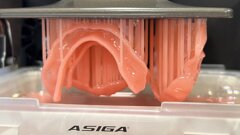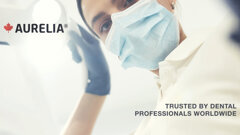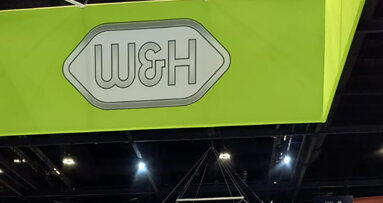Did you know that your wipe’s ability to keep a surface wet is as important as its kill time? Don’t just care about contact time, care about evaporation time.
Imagine you’re painting a wall. Move the brush too quickly and you will get less paint on the surface. But using nice, steady strokes will coat the surface evenly so that it dries consistently. Your surface disinfectant works just like that. It’s about how much a single disinfectant wipe can cover and how slowly the surface dries after contact.
A disinfectant wipe’s contact time is about how long a bacteria or virus must be exposed to the solution in the wipe for it to be rendered inactive. Sometimes referred to as a solution’s kill time, contact time only counts if the surface is wet with the solution.
A surface can’t be disinfected if the solution has evaporated before reaching its contact time. And depending on your wipe type, this could be a problem.
Because of their potent germicidal properties, many disinfectant wipes include ethyl alcohol (or ethanol) or isopropyl alcohol as part of their active ingredients. But alcohol’s volatility can cause it to evaporate too quickly from a surface. If a disinfectant evaporates before the contact time has elapsed, all germ-killing activity is compromised.
So how can you tell if your wipe is drying too fast? When you wipe down the back of a dental chair, by the time you are working on the seat, check to see if the back is still wet. If it has dried before the product’s contact time, then the chair is not properly disinfected.
A good disinfectant wipe will have additional qualities like a formulation with reduced surface tension, allowing for an even spread instead of beading. Wipe material is also important. A durable, non-woven construction ensures that the solution in the wipe gets deposited on the surface instead of staying inside the wipe. These two qualities are present in SciCan’s new OPTIM OS1 wipes, which use a proprietary surfactant-based solution.
In a recent Dental Advisor study on surface disinfectant wipes, OPTIM OS1 outperformed the other brands — including a leading quat-alcohol wipe. Not only did it remain effective for its full one-minute contact time, but it also covered a much larger surface area than the competitor wipes. Beyond proving its effectiveness, the study showed that a single OPTIM OS1 wipe was able to effectively clean and disinfect a surface area that would take several competitor wipes to complete effectively.
To learn more, drop by the SciCan booth at the Ontario Dental Association's Annual Spring Meeting and pick up a free sample of OPTIM OS1.
Tags:
I think we can agree that dentistry is not the most environmentally friendly profession. Just take into consideration the number of single-use materials ...
At this year’s Canadian dental meetings, the W&H team will feature state-of-the-art dental solutions along with personal demonstrations given by ...
Live webinar
Wed. 14 January 2026
12:00 PM EST (Toronto)
Dr. Théo Laplane, Dr. Robert Gottlander DDS
Live webinar
Fri. 16 January 2026
12:00 PM EST (Toronto)
Live webinar
Mon. 19 January 2026
1:00 PM EST (Toronto)
Philipp Kopp, Michael Seeber
Live webinar
Thu. 22 January 2026
9:00 AM EST (Toronto)
Prof. Judith Jones D.D.S; M.P.H., Prof. Kakuhiro Fukai D.D.S., Ph.D, Dr. Bathsheba (Bethy) Turton
Live webinar
Thu. 22 January 2026
2:00 PM EST (Toronto)
Dr. Nicola M. Grande DDS, PhD
Live webinar
Wed. 28 January 2026
8:00 AM EST (Toronto)
Live webinar
Wed. 28 January 2026
11:00 AM EST (Toronto)
Prof. Dr. Jan-Frederik Güth



 Austria / Österreich
Austria / Österreich
 Bosnia and Herzegovina / Босна и Херцеговина
Bosnia and Herzegovina / Босна и Херцеговина
 Bulgaria / България
Bulgaria / България
 Croatia / Hrvatska
Croatia / Hrvatska
 Czech Republic & Slovakia / Česká republika & Slovensko
Czech Republic & Slovakia / Česká republika & Slovensko
 France / France
France / France
 Germany / Deutschland
Germany / Deutschland
 Greece / ΕΛΛΑΔΑ
Greece / ΕΛΛΑΔΑ
 Hungary / Hungary
Hungary / Hungary
 Italy / Italia
Italy / Italia
 Netherlands / Nederland
Netherlands / Nederland
 Nordic / Nordic
Nordic / Nordic
 Poland / Polska
Poland / Polska
 Portugal / Portugal
Portugal / Portugal
 Romania & Moldova / România & Moldova
Romania & Moldova / România & Moldova
 Slovenia / Slovenija
Slovenia / Slovenija
 Serbia & Montenegro / Србија и Црна Гора
Serbia & Montenegro / Србија и Црна Гора
 Spain / España
Spain / España
 Switzerland / Schweiz
Switzerland / Schweiz
 Turkey / Türkiye
Turkey / Türkiye
 UK & Ireland / UK & Ireland
UK & Ireland / UK & Ireland
 International / International
International / International
 Brazil / Brasil
Brazil / Brasil
 Latin America / Latinoamérica
Latin America / Latinoamérica
 USA / USA
USA / USA
 China / 中国
China / 中国
 India / भारत गणराज्य
India / भारत गणराज्य
 Pakistan / Pākistān
Pakistan / Pākistān
 Vietnam / Việt Nam
Vietnam / Việt Nam
 ASEAN / ASEAN
ASEAN / ASEAN
 Israel / מְדִינַת יִשְׂרָאֵל
Israel / מְדִינַת יִשְׂרָאֵל
 Algeria, Morocco & Tunisia / الجزائر والمغرب وتونس
Algeria, Morocco & Tunisia / الجزائر والمغرب وتونس
 Middle East / Middle East
Middle East / Middle East













































To post a reply please login or register